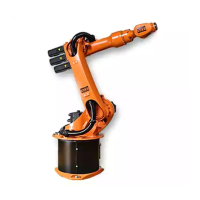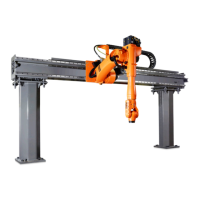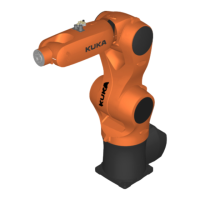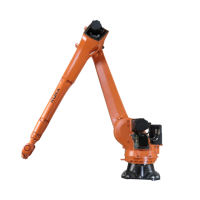6 Transportation
63 of 206
BA KR 6, 16 F, KR C4 12.10.07 en
6 Transportation
Information!
This description applies analogously to all of the industrial robots listed in Chapter 1,
regardless of the variant or model shown in the illustrations.
6.1 General
Caution!
If the manipulator is transported by fork lift truck, the forks must be placed in the
fork slots. It is forbidden to pick up the manipulator in any other way using a
fork lift truck!
The fork lift truck, lifting tackle and crane must be suitable for handling the
manipulator. For weight, see Chapter 4, “Technical data”.
The manipulator must be moved into its transport position each time it is
transported. It must be ensured that the manipulator is stable while it is being
transported.
The manipulator must remain in its transport position until it is -- depending on
the type -- fastened to the floor, the ceiling or to a hinged steel base.
Before the manipulator is lifted, it must be ensured that it is free from
obstructions. Transport safeguards, such as nails and screws, are all to be
removed in advance, as is any rust or glue on contact surfaces.
The dimensions for the individual robot variants may be noted from Fig. 42. The position of
the center of mass and the weight vary slightly between the individual robot variants.
The most important factor in deciding on the method of transportation is the installation posi-
tion of the manipulator. If the manipulator is to be moved using lifting tackle, the fork slots
(2) must first be removed and two of the three M12x30 DIN 580 eyebolts (1) inserted into
the rear tapped holes that are now vacant.
1
2
Fig. 39 Transport position

